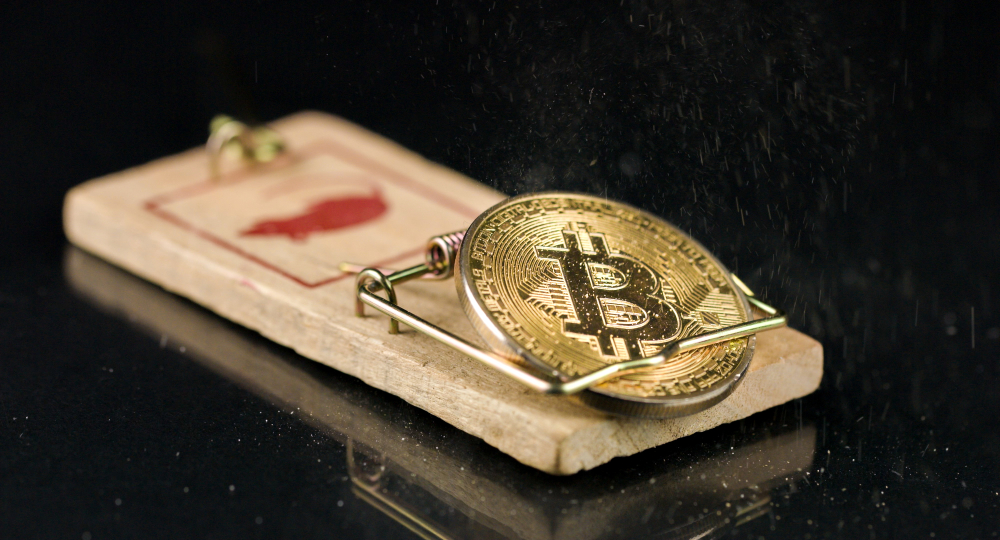A subscriber recently wrote to say he took my advice and used the down market to selectively buy beaten-down shares of high-quality companies.
“Should I buy the crypto dip too?” he asked.
Don’t even think about it.
I’ve warned readers about cryptomania repeatedly over the past two years, well before it reached its peak.
What’s wrong with cryptocurrencies? Just about everything…
- They have no tangible value.
- They fluctuate wildly in price, making them unsuitable for business purposes.
- They are environmentally destructive. (Bitcoin mining produces more carbon emissions each year than the country of Argentina.)
- They are vulnerable to competition within the industry and regulation from outside the industry.
- Crypto holders are susceptible to hackers, operational glitches and malware.
- Investors are regularly cheated or defrauded.
- And the crypto ecosystem lacks accountability and legal recourse, so there is little basis for trust.
It’s wrong to even call crypto an “investment.”
After all, there is nothing to analyze. No interest payments, sales, royalties, rental income, cash flow, earnings or net asset value.
A cryptocurrency is worth what someone else is willing to pay for it. Period.
Just like a Hank Aaron rookie card or first edition Spider-Man comic book.
Bitcoin bulls point out that – unlike the U.S. dollar or other major currencies – there is scarcity in the form of limited issuance.
But how valuable is limited issuance when there are an unlimited number of cryptocurrencies, most with the same feature?
Some insist that Bitcoin deserves its sky-high valuation because it’s the most widely accepted digital currency.
Yet economic history is full of first movers that wound up on the ash heap. To name just a few…
- Motorola had the most widely used cellphone.
- Netscape had the most widely used web browser.
- AOL was the most widely used internet portal.
- Yahoo had the most widely used search engine.
- BlackBerry had the most widely used smartphone.
Bitcoin, like everything in the free market, is vulnerable to innovation and competition.
Are you really going to pay $23,000 for a single Bitcoin when it traded for eight-hundredths of a penny just over a decade ago?
Others insist that more countries will follow El Salvador’s lead and allow Bitcoin as legal tender.
But that has not become a trend.
In fact, after El Salvador made the decision, Moody’s Investors Service quickly downgraded the country’s credit rating, specifically citing the new Bitcoin law and the country’s “deterioration in the quality of policymaking.”
Another risk for Bitcoin holders is regulation, especially in the wake of the collapse of FTX – one of the largest crypto exchanges.
Some countries have banned crypto payments. Others are considering it.
Why? For starters, all ransomware attacks demand payment in crypto, generally Bitcoin.
This has gone from costing society hundreds of millions of dollars annually to billions of dollars annually.
Does anyone really believe that major governments will just sit back and continue to do nothing?
Unlike personal computers, the internet, the cloud or 5G, cryptocurrencies don’t solve real-world problems.
Moreover, virtually everything that crypto promoters have told us would happen hasn’t happened.
They said it would make transactions quicker. They are slower.
They said it would make them cheaper. They are more expensive.
They said it would make them easier. They are more difficult.
They said crypto would hedge inflation and even called it “digital gold.”
Well, we had a good first test recently when we experienced the highest inflation in 41 years.
Yet the crypto market imploded, losing over two-thirds of its value.
(Some hedge.)
Digital currencies are too volatile for regular purchases or sales, especially of big-ticket items.
As for borrowing or lending in these currencies? Forget about it.
If you’re a lender, the dollar value of your crypto loan could quickly become worth a fraction of the amount you lent.
If you’re a borrower, the dollar value of what you owe could quickly become a multiple of what you borrowed.
That’s why virtually no one is buying, selling, borrowing or lending in “the currency of the future.”
“Oh, but they will… and soon,” the promoters keep telling us.
Really? Bitcoin has been around almost as long as the iPhone.
Imagine if 13 years later all anyone was doing with their smartphone was betting on the future price of it.
There are a few exceptions, of course.
If you’re a terrorist network, drug cartel, heavy weapons dealer, human trafficker, extortionist, tax cheat, money launderer or rogue nation trying to avoid sanctions, crypto is a godsend.
For everyone else, all crypto is good for is speculation.
And that speculation hasn’t worked out well for the vast majority of investors.
Even though the price of Bitcoin is up more than 20,000-fold over the last 12 years, Switzerland’s Bank for International Settlements recently reported that between 73% and 81% of investors have lost money on their initial investment.
Economists note that the main buyers of Bitcoin are “risk-seeking” young men under 35.
They were not drawn to it by libertarian arguments about the value of decentralized finance but by promises of big returns for no effort.
Indeed, many cryptos are nothing more than scams or poorly run projects that collapse under mismanagement.
Others are vulnerable to hacks that cause supporters’ money to vanish.
Even the safest part of the crypto market – stablecoins – has been a crushing disappointment. (Or rather a crashing disappointment.)
Yet millions of people remain true believers. Most of them are not sophisticated investors.
In the words of comedian John Oliver, crypto is “everything you don’t understand about money combined with everything you don’t understand about computers.”
If you have any remaining skepticism that crypto is a massive bubble, consider the ridiculous Dogecoin, a cryptocurrency created as a joke and useful for absolutely nothing.
At its peak, it was worth more than $90 billion, almost twice as much as Marriott International (Nasdaq: MAR), the world’s leading hotelier with more than 7,500 properties in 133 countries.
How could that not be a bubble?
Dogecoin isn’t Bitcoin, of course. But both prices are highly correlated.
I asked my research team to chart Bitcoin against Dogecoin over the last year.
As you can see, they are practically moving in unison.
Unlike real money, cryptocurrencies are not the result of labor or productive investments.
They give purchasing power to people who have done nothing to expand or improve the economy.
In my last column, I noted how the iPhone had changed the world and delivered a 30-fold return for Apple shareholders.
Serious investors have taken note. Apple (Nasdaq: AAPL), for example, is the single largest holding in Berkshire Hathaway (NYSE: BRK-B).
Chairman Warren Buffett also has strong views about the crypto market. He calls it “probably rat poison squared.”
(Buffett’s partner Charlie Munger called in a Wall Street Journal op-ed this week for an outright ban on crypto, pointing out that it “is not a currency, not a commodity, and not a security. Instead, it’s a gambling contract with a nearly 100% edge for the house.”)
In short, my advice about crypto remains the same…
If you haven’t bought it, don’t. If you have bought it, sell it now.
Yes, it could go higher in the short term. (You can’t make a rational judgment about when irrational behavior will end.)
But one day crypto traders will wake up and realize en masse that the emperor has no clothes.
Then the downdraft that started 14 months ago will really pick up momentum.
Investors still refer to the tulip-bulb mania in the Dutch Republic in the 17th century, when the price of a single bulb exceeded many people’s annual income.
Crypto isn’t just tulip bulbs 2.0. It’s tulip bulbs cubed.
And it will end – as all financial manias eventually do – in devastating losses. And in tears.
Credit: Source link














